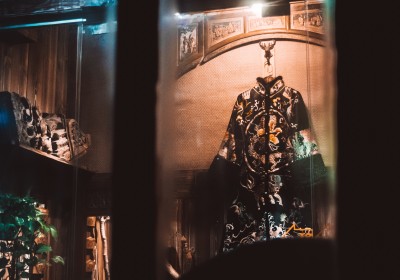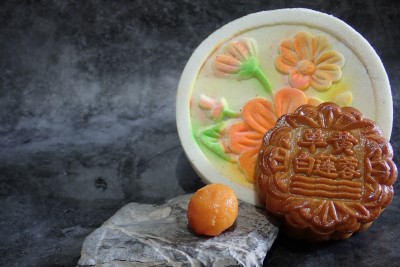The Long History of the Mid-Autumn Festival
The Mid-Autumn Festival is one of the most celebrated traditions in Chinese culture, tracing its origins back to the Tang Dynasty (618-907 AD). The festival is held on the 15th day of the 8th month of the Chinese lunar calendar when the moon is believed to be at its fullest and brightest. This festival is deeply rooted in the folklore tale of Chang'e, the moon goddess, symbolizing reunion and harmony.
 According to legend, Chang'e was the wife of a legendary archer named Hou Yi, who shot down nine of the ten suns that were scorching the earth. As a reward, he was given an elixir of immortality. However, Chang'e drank the elixir to prevent a wicked man from stealing it while Hou Yi was out. After drinking it, she became so light that she floated all the way to the moon. From that point forward, Hou Yi would worship the moon and offer it sacrifices, hoping to be close to his wife. This tale has become synonymous with the Mid-Autumn Festival and is a symbol of love, sacrifice, and reunion.
During the Song Dynasty, the making and sharing of mooncakes became a popular tradition associated with the festival. The mooncakes not only represent the full moon but also symbolize unity and reunion.
In modern times, the Mid-Autumn Festival is a time for families to gather together, to give thanks for the harvest, and to pray for a good future. It's a celebration of unity, harmony, and renewal. The festival's history and its emphasis on togetherness make it a perfect tradition to share as an Au Pair with the Host Family
According to legend, Chang'e was the wife of a legendary archer named Hou Yi, who shot down nine of the ten suns that were scorching the earth. As a reward, he was given an elixir of immortality. However, Chang'e drank the elixir to prevent a wicked man from stealing it while Hou Yi was out. After drinking it, she became so light that she floated all the way to the moon. From that point forward, Hou Yi would worship the moon and offer it sacrifices, hoping to be close to his wife. This tale has become synonymous with the Mid-Autumn Festival and is a symbol of love, sacrifice, and reunion.
During the Song Dynasty, the making and sharing of mooncakes became a popular tradition associated with the festival. The mooncakes not only represent the full moon but also symbolize unity and reunion.
In modern times, the Mid-Autumn Festival is a time for families to gather together, to give thanks for the harvest, and to pray for a good future. It's a celebration of unity, harmony, and renewal. The festival's history and its emphasis on togetherness make it a perfect tradition to share as an Au Pair with the Host Family, fostering a deeper understanding and
appreciation of different culture.
What you should do at the festival
 The Mid-Autumn Festival is rich in traditions. The most popular one is the making and sharing of mooncakes, a delicacy symbolizing unity and togetherness. These pastries are typically filled with lotus paste or red bean paste and often have a salted egg yolk in the center, symbolizing the full moon.
The Mid-Autumn Festival is rich in traditions. The most popular one is the making and sharing of mooncakes, a delicacy symbolizing unity and togetherness. These pastries are typically filled with lotus paste or red bean paste and often have a salted egg yolk in the center, symbolizing the full moon.
Families gather to make these mooncakes, a tradition that you can share with your Host Family. As an Au Pair, you can teach the children how to make these and turn it into a fun and educational activity where they learn about another culture while honing their
culinary skills.
All you need is the dough, mixing golden syrup, lye water, vegetable oil, and flour. Then you can roll the dough and filling into balls, and then press them into the typical mooncake mold. This is a perfect time for children to express their creativity. They can choose different shapes and designs for their mooncakes.
Apart from mooncake making, there's also the tradition of moon gazing, where families sit outdoors to admire the beauty of the full moon. You can organize a small picnic in the backyard with traditional Chinese snacks, lanterns, and riddles, another common pastime during the festival. It's a great way to engage the whole family and encourage the children to learn about Asian culture.
Mid-Autumn Festival in different countries
The Mid-Autumn Festival is celeb
rated in various ways across different countries. In
Vietnam, it's known as Tết Trung Thu, where children participate in parades with lanterns of different shapes. In
Korea, they celebrate Chuseok, a major harvest festival where families visit their ancestral hometowns and share a feast. In
Japan, the Mid-Autumn Festival is known as Tsukimi or Otsukimi, which translates to "moon viewing".
Tsukimi is a more tranquil and contemplative festival compared to its counterparts in China, Vietnam, and Korea. People often spend the evening quietly gazing at the moon, sometimes with poetry readings and music. Some places also have lantern floating ceremonies for a more festive atmosphere.
The Mid-Autumn Festival presents an incredible opportunity for cultural exchange. As an Au Pair, it's not just about introducing your host Family to new traditions, but also about creating a bridge between cultures. It's about showing the children that despite our different backgrounds, we all share similar values of family, unity, and appreciation for the harvest and natural world.
 According to legend, Chang'e was the wife of a legendary archer named Hou Yi, who shot down nine of the ten suns that were scorching the earth. As a reward, he was given an elixir of immortality. However, Chang'e drank the elixir to prevent a wicked man from stealing it while Hou Yi was out. After drinking it, she became so light that she floated all the way to the moon. From that point forward, Hou Yi would worship the moon and offer it sacrifices, hoping to be close to his wife. This tale has become synonymous with the Mid-Autumn Festival and is a symbol of love, sacrifice, and reunion.
According to legend, Chang'e was the wife of a legendary archer named Hou Yi, who shot down nine of the ten suns that were scorching the earth. As a reward, he was given an elixir of immortality. However, Chang'e drank the elixir to prevent a wicked man from stealing it while Hou Yi was out. After drinking it, she became so light that she floated all the way to the moon. From that point forward, Hou Yi would worship the moon and offer it sacrifices, hoping to be close to his wife. This tale has become synonymous with the Mid-Autumn Festival and is a symbol of love, sacrifice, and reunion. The Mid-Autumn Festival is rich in traditions. The most popular one is the making and sharing of mooncakes, a delicacy symbolizing unity and togetherness. These pastries are typically filled with lotus paste or red bean paste and often have a salted egg yolk in the center, symbolizing the full moon.
The Mid-Autumn Festival is rich in traditions. The most popular one is the making and sharing of mooncakes, a delicacy symbolizing unity and togetherness. These pastries are typically filled with lotus paste or red bean paste and often have a salted egg yolk in the center, symbolizing the full moon. rated in various ways across different countries. In Vietnam, it's known as Tết Trung Thu, where children participate in parades with lanterns of different shapes. In Korea, they celebrate Chuseok, a major harvest festival where families visit their ancestral hometowns and share a feast. In Japan, the Mid-Autumn Festival is known as Tsukimi or Otsukimi, which translates to "moon viewing".
rated in various ways across different countries. In Vietnam, it's known as Tết Trung Thu, where children participate in parades with lanterns of different shapes. In Korea, they celebrate Chuseok, a major harvest festival where families visit their ancestral hometowns and share a feast. In Japan, the Mid-Autumn Festival is known as Tsukimi or Otsukimi, which translates to "moon viewing".